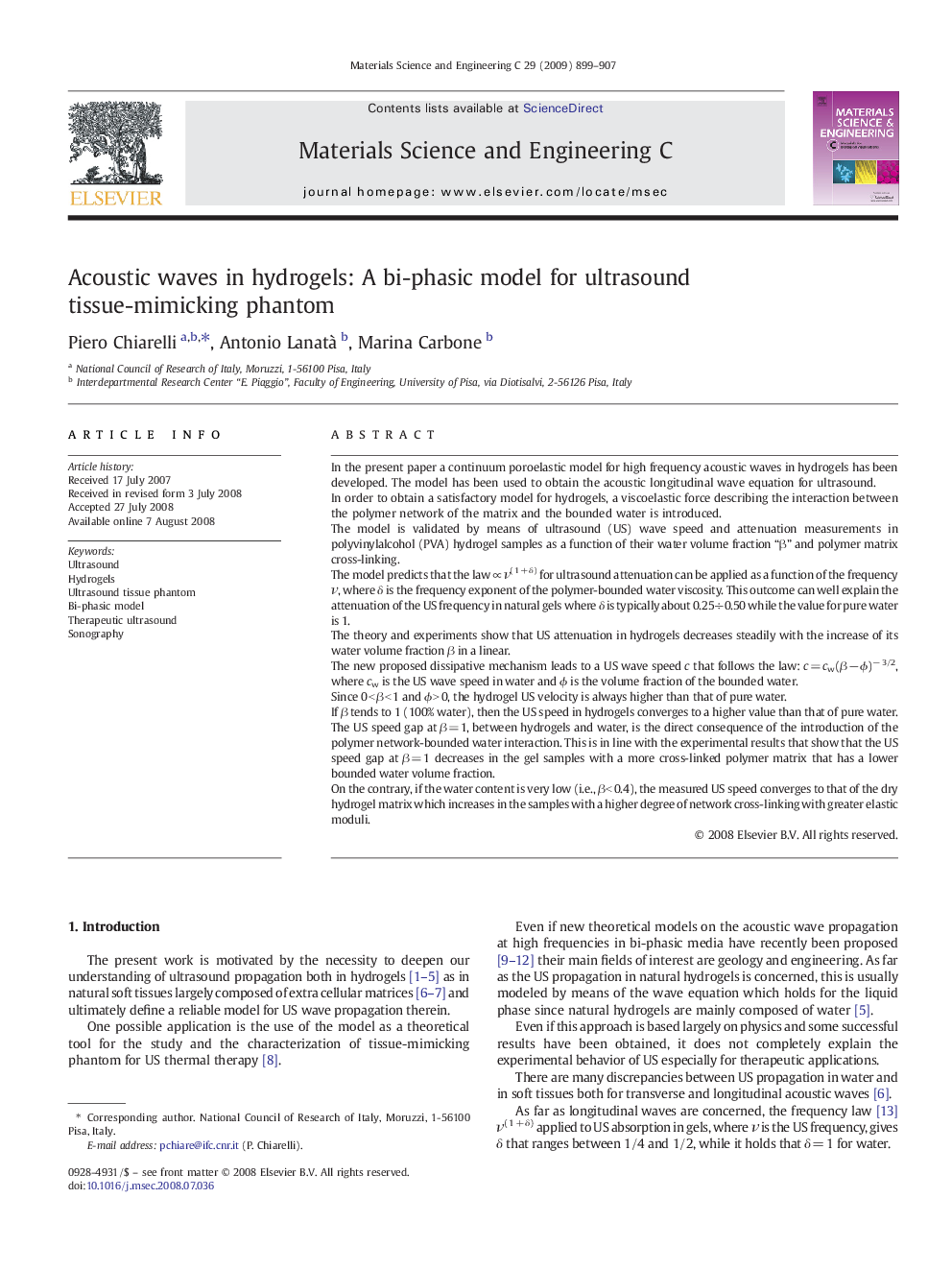| Article ID | Journal | Published Year | Pages | File Type |
|---|---|---|---|---|
| 1430166 | Materials Science and Engineering: C | 2009 | 9 Pages |
In the present paper a continuum poroelastic model for high frequency acoustic waves in hydrogels has been developed. The model has been used to obtain the acoustic longitudinal wave equation for ultrasound.In order to obtain a satisfactory model for hydrogels, a viscoelastic force describing the interaction between the polymer network of the matrix and the bounded water is introduced.The model is validated by means of ultrasound (US) wave speed and attenuation measurements in polyvinylalcohol (PVA) hydrogel samples as a function of their water volume fraction “β” and polymer matrix cross-linking.The model predicts that the law ∝ ν(1 + δ) for ultrasound attenuation can be applied as a function of the frequency ν, where δ is the frequency exponent of the polymer-bounded water viscosity. This outcome can well explain the attenuation of the US frequency in natural gels where δ is typically about 0.25÷0.50 while the value for pure water is 1.The theory and experiments show that US attenuation in hydrogels decreases steadily with the increase of its water volume fraction β in a linear.The new proposed dissipative mechanism leads to a US wave speed c that follows the law: c = cw(β − ϕ)− 3/2, where cw is the US wave speed in water and ϕ is the volume fraction of the bounded water.Since 0 < β < 1 and ϕ > 0, the hydrogel US velocity is always higher than that of pure water.If β tends to 1 (100% water), then the US speed in hydrogels converges to a higher value than that of pure water.The US speed gap at β = 1, between hydrogels and water, is the direct consequence of the introduction of the polymer network-bounded water interaction. This is in line with the experimental results that show that the US speed gap at β = 1 decreases in the gel samples with a more cross-linked polymer matrix that has a lower bounded water volume fraction.On the contrary, if the water content is very low (i.e., β < 0.4), the measured US speed converges to that of the dry hydrogel matrix which increases in the samples with a higher degree of network cross-linking with greater elastic moduli.
